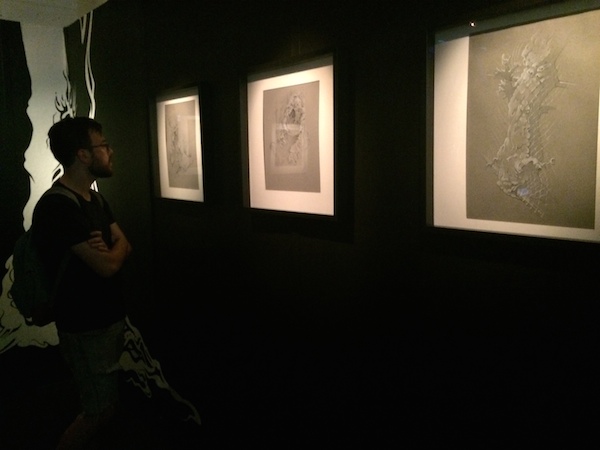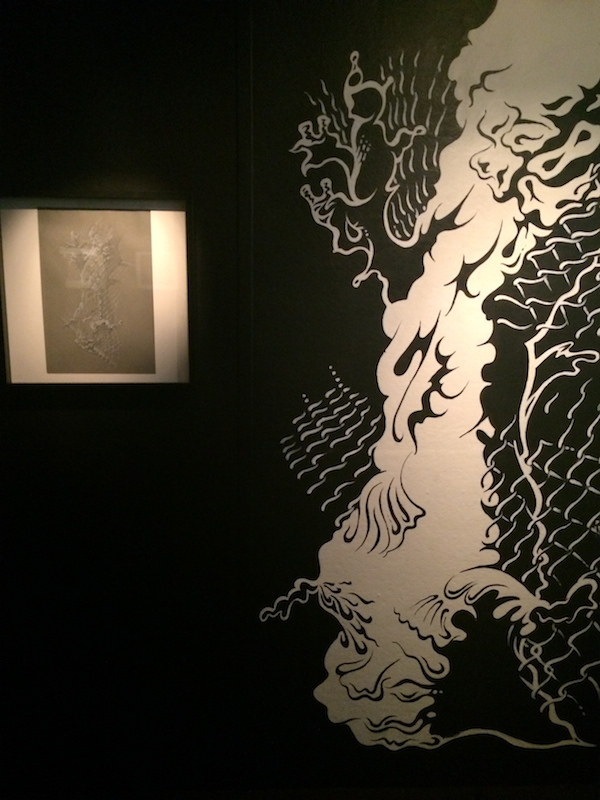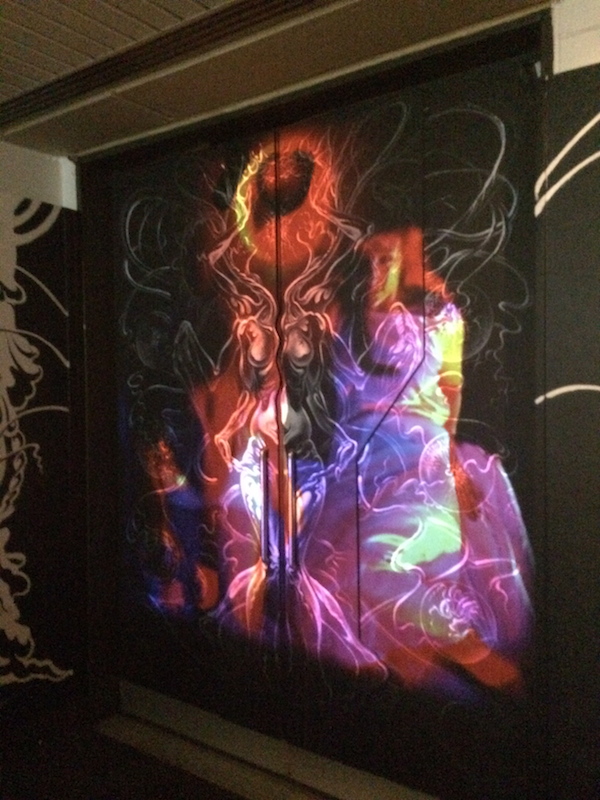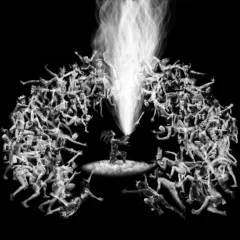[Alexander takes us through a dreamy exhibition that creates whole worlds where most of us see only trees. — the Artblog editors]
When you have lived in any place for long enough, you can begin to succumb to a passivity of sight, navigating with blinders through day-to-day life. Unless you are Ted Knighton, whose installation, Street Trees, currently on display at the International House, breathes new life into even the most forgettable aspects of the city and transforms them into living, pulsating entities engaged in a struggle with time, space, and the human race.
Humanity and nature face off

Through an assortment of drawings, wall murals, and video projection, the artist takes the viewer through an alternate plane where everyday minutiae–hardly acknowledged when passed on the street–become demigods in a narrative that’s both familiar, yet surprisingly original.
While all three media work their own individual spells, the theme that ties them together is that of nature fighting with the man-made in an urban environment: nature taking over when man’s creation is abandoned, or man’s creation binding nature. The pieces suggest that while city-dwellers may have grown numb to it, they are walking through a battleground in their city each day–a miniature dystopia that can be just as riveting as any big-budget, sci-fi motion picture.

Knighton’s drawings express the most straightforward forms of this strife. The gnarled trunks of ancient trees become oozing, melting, pulsating extraterrestrials pushing away planted parking meters and tidy ironwork fencing, combating chain-link fences as their bark appendages reach through the holes towards freedom. They are at the same time amorphous and bodied; without sex, yet containing forms that suggest female anatomy–femininity being long associated with the natural world.
The mural, too, suggests female bodies, echoing the scenes in the drawings, only on a life-size scale; the white, cartoon-stylized tree silhouettes curl and twist and sigh in the overhead light. A pair of large murals bookends each set of small drawings, like giant illustrations accompanying this collection of ghost stories. The murals are not delicate like the drawings, but they create an atmosphere that envelops the viewer in a way the drawings don’t.
A hypnotizing video mural

The highlight of the installation, its central feature, is the video projection, ever-shifting despite a fixed, central figure of a tree-like female body presented in shining chrome, with the cold, mechanical eroticism of H.R. Giger or Hajime Sorayama.
Washes of cool and warm colors vibrate like the surface of water or fire onto the figure, as images of human figures, planetary circles, and wavering laser beams dance, fold, and flow before the viewer’s eyes. Here is the clash of nature and artifice, the central body a canvas for more of the drama–a drama whose origin is found in the smallest iota of everyday urban existence.
The overall effect Knighton creates is literary, rich with metaphor, and steeped in admiration for the small juxtapositions that occur between the natural world and the man-made. The artist is neutral in a war that has been going on since the human race settled permanently in one place. And Knighton acknowledges, with his nods to celestial spaces and beings, that this struggle will only become greater and more exhilarating in the future.
Street Trees can be seen at the International House at 3701 Chestnut Street, Philadelphia, PA 19104, from July 10 through the end of September 2014.
Alexander Fiorentino is a recent graduate of Temple University with a B.A. in art history and cultural anthropology, and hopes to continue his studies in post-war modern and contemporary art.









